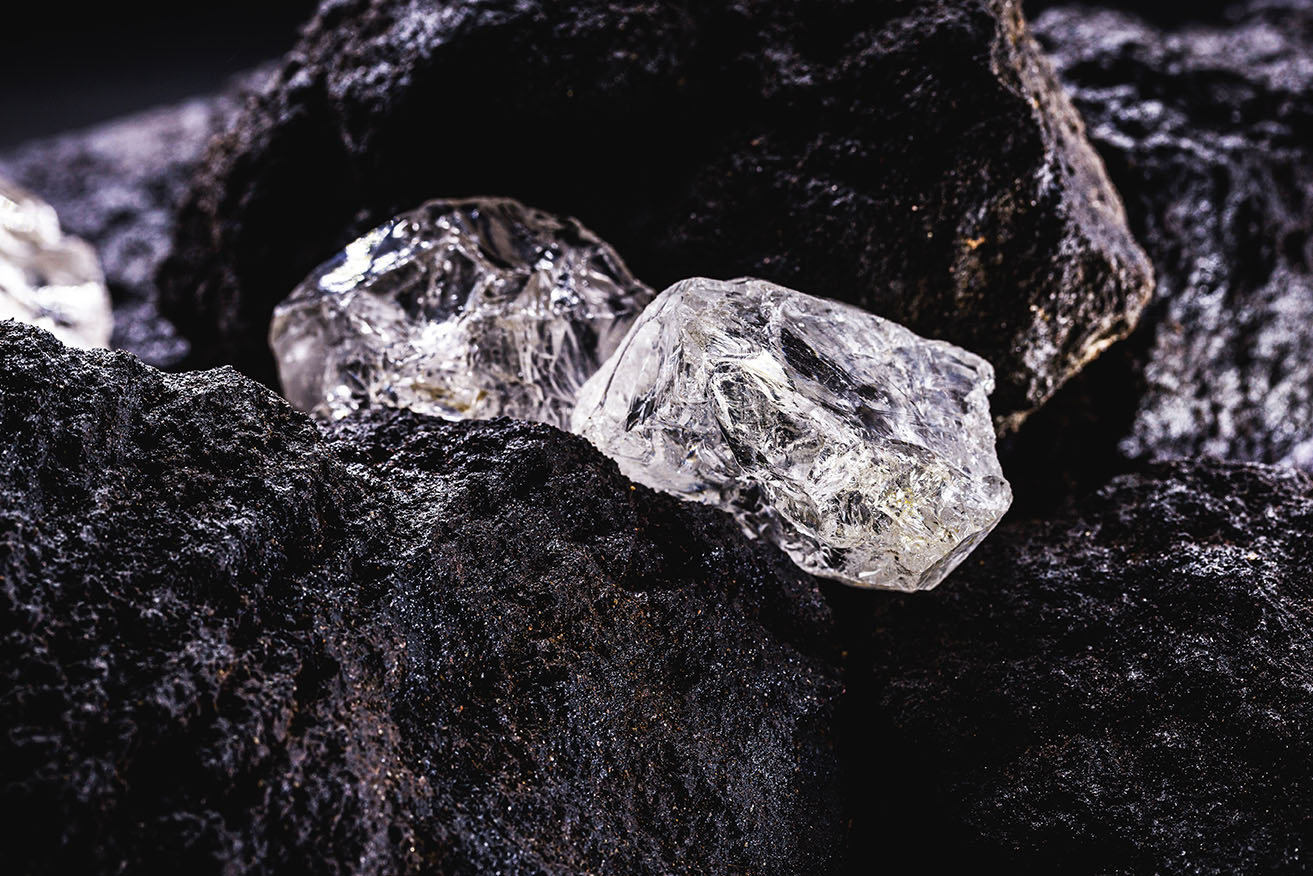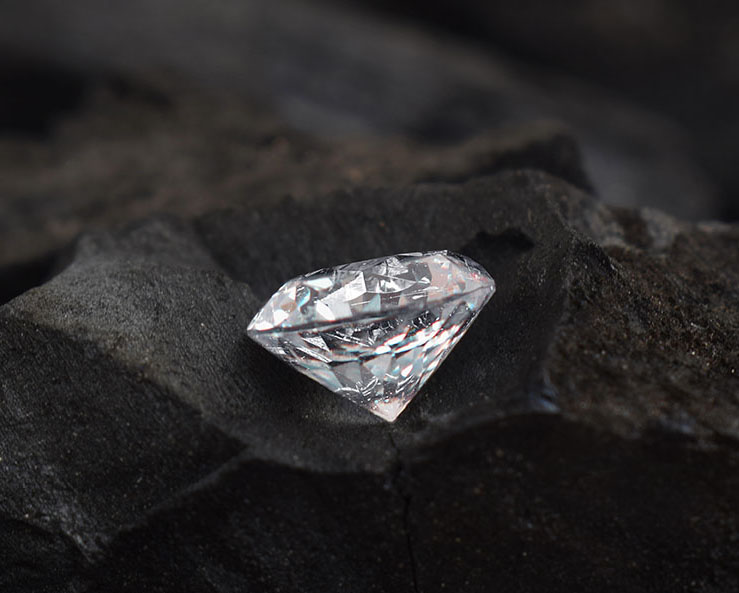
What Are Natural Diamonds?
Billions of years ago, deep below the earth's surface, pockets of carbon atoms compressed into a cubic crystalline structure. This structure bonds each atom to four others, or tetrahedrally, creating the hardest and most conductive of all known natural materials.
Diamond formation requires an unfathomable amount of pressure and heat. As far as scientists know, these conditions only exist 100 miles below the earth, where 725,000 pounds per square inch of pressure and 2500 degree Fahrenheit temperatures provide the ideal environment for carbon atom compression.
Once formed, these diamonds traveled through molten rock that erupted during volcanic activity, depositing the precious stone close to the earth's surface.
The countries of Botswana and South Africa are leading producers of diamonds, but mines exist in several countries worldwide.


How Are Natural Diamonds Different Than Lab Grown Diamonds?
The key difference between natural diamonds and lab grown diamonds is their origins and price.
There is virtually no difference between natural diamonds and lab grown diamonds to the naked eye. Still, there is a significant price reduction because they are not as rare as natural diamonds. That means couples can find stunning lab grown stones in sizes that might otherwise be out of budget.
Natural diamonds are created when carbon atoms are compressed in the right temperature and pressure conditions deep within the earth’s mantle. Lab grown diamonds recreate these conditions using high-tech equipment under the supervision of experts.
Lab-grown diamonds are virtually indistinguishable from natural diamonds, as they have the same atomic composition and structure. Both consist of carbon arranged in the same tetrahedral pattern.
